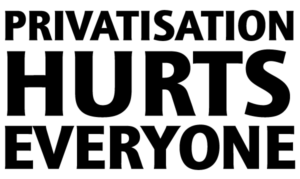Description
Reclaim our Common Wealth, the peoples assets, not politicians. Learn how to join the movement against privatisation & ensure a fair future.
Introduction
In every Australian’s heart lies a deep belief in the ‘Common Wealth.’ This principle asserts that our nation’s assets, resources, and essential services belong to the people, not to governments, politicians, or corporations. However, recent privatisation trends threaten this belief, prompting a call to reclaim our common wealth and public ownership of essential services.
Understanding the Impact of Privatisation
The Promises vs. Reality

Privatisation is often sold to the public with promises of increased efficiency, innovation, and better management. Proponents argue that private companies can deliver services more effectively and at a lower cost compared to public sector entities. However, the reality is often starkly different.
In practice, privatisation can lead to a number of negative outcomes. For example, private companies are driven by profit motives, which can result in cost-cutting measures that affect service quality. Additionally, private entities may prioritize lucrative markets, leaving less profitable or more remote areas underserved. This shift can worsen inequalities and reduce overall access to essential services.
The Consequences of Privatisation
1. Higher Costs: One of the most significant impacts of privatisation is the increase in costs for services. When services such as water, electricity, and transportation are privatised, the primary goal of the new owners is to generate profit. This often leads to higher fees for consumers, as private companies look to maximize their returns.
2. Reduced Access: Privatisation can also lead to reduced access to essential services. For example, in the healthcare sector, privatisation might result in fewer hospitals and clinics in rural or less profitable areas, leaving residents without adequate medical care. Similarly, privatised education services might prioritize affluent areas, leaving disadvantaged communities with fewer educational resources.
3. Profit Over People: The fundamental difference between public and private ownership is the priority of profit over public welfare. While public services are designed to serve the community and ensure fair access, private companies focus on profitability. This shift in focus can lead to diminished service quality and accessibility, as companies cut corners to increase their bottom line.
Reclaiming Our Common Wealth: Steps to Take Action
Making Your Voice Heard

Reclaiming our common wealth involves taking active steps to oppose privatisation and advocate for the return of essential services to public ownership. Here are some effective ways to make your voice heard:
1. Contact Your Representatives: Reach out to your local, state, and federal representatives to express your concerns about privatisation. Write letters, send emails, or make phone calls to communicate your stance and demand action. Personal stories and well-researched arguments can be particularly persuasive.
2. Use Social Media: Social media platforms like Facebook, Twitter, and Instagram are powerful tools for raising awareness and mobilizing support. Use relevant hashtags such as #ReclaimOurCommonWealth, #PublicOwnershipNow, #NoMorePrivatisation, and #OurAssetsOurRights to join the larger conversation and amplify your message.
3. Start or Sign Petitions: Online petitions can be an effective way to show public support for a cause. Platforms like Change.org allow you to create and sign petitions that can put pressure on policymakers and corporations to reconsider privatisation plans.
4. Public Demonstrations: Participating in peaceful protests and rallies can draw attention to the issue of privatisation and show the strength of public sentiment. Organize or join demonstrations to make a visible stand against the sale of public assets.
5. Engage Your Community: Grassroots efforts can be highly effective in building support for public ownership. Organize community meetings, distribute informational flyers, and educate your neighbours about the impact of privatisation and the importance of reclaiming our common wealth.
6. Media Engagement: The media can be a valuable ally in spreading your message. Write op-eds or letters to the editor for local newspapers and contact TV or radio stations to cover the issue. Highlighting personal stories and local impacts can make your case more compelling.
Understanding Australia’s Monetary Sovereignty
The Basics of Monetary Sovereignty
A key aspect of reclaiming our common wealth is understanding the concept of monetary sovereignty. Unlike a household or non-governmental business, the Australian government, as the issuer of its currency, is not financially constrained in the same way. This means that the government can create Australian dollars as needed to fund public services and investments. It is a political choice, not an economic necessity, to underfund public services.
Monetary sovereignty allows the government to prioritize public welfare without being limited by revenue constraints. This capability is crucial for supporting and expanding public ownership of essential services.
The Real Constraint: Resource Availability
While the government can create money, it cannot create resources. The real constraint on federal spending is the availability of resources such as labor, skills, technology, and infrastructure. Effective public spending must focus on mobilizing these resources to meet public needs without causing inflation.
For example, funding a large infrastructure project requires not just money but also skilled workers, construction materials, and technology. The government must ensure that these resources are available and efficiently used to avoid inflationary pressures.
Inflation Risk vs. Insolvency Risk
In public finance, the risk of inflation is a more significant concern than insolvency. When the government spends too much compared to the economy’s capacity to produce goods and services, it can lead to inflation. Therefore, the focus should be on managing inflation risks through careful planning and resource allocation.
This understanding shifts the debate from whether the government can afford to fund public services to how it can manage spending to improve resource use and control inflation.
Productive Capacity of the Economy
The productive capacity of the economy is the true limit on government spending. It encompasses the availability and efficiency of resources such as labor, skills, technology, and infrastructure. When these resources are underutilized, the government can increase spending to mobilize them without causing inflation.
For example, during periods of high unemployment, the government can invest in job-creating projects to use the idle labor force. This approach not only stimulates economic activity but also enhances public welfare by providing essential services and infrastructure.
Conclusion
Understanding monetary sovereignty and the real constraints on government spending is crucial for informed public finance decisions. The Australian government, as the currency issuer, has the power to create a fair and prosperous society. The challenge lies in managing real resources and inflation risks, not in finding dollars.
Call to Action
Are you ready to reclaim your Common Wealth? Write to your local representative, share your thoughts on social media, and start conversations within your community. Change begins with you. Join the movement to bring our essential services back under public ownership. Let us reclaim our Common Wealth!
Questions for Readers
1. Do you believe privatisation has helped Australia?
2. What steps will you take to support the movement for public ownership?
Share this Article
If you found this article helpful, please share it with your contacts and on social media to spread the word and support the cause.
References:
How states are being screwed by the High Court and federal government: https://www.thenewdaily.com.au/opinion/2023/11/16/alan-kohler-state-federal-funding
Why Public-Private Partnerships Don’t Work: https://www.world-psi.org/sites/default/files/rapport_eng_56pages_a4_lr.pdf
When Public-Private Partnerships (PPPS) Turn Sour: Australian Evidence: https://www.monash.edu/__data/assets/pdf_file/0020/2052092/WP2017-03.pdf
Fear of spending: https://australiainstitute.org.au/post/fear-of-spending/
Modern Monetary Theory: How MMT is challenging the economic establishment: https://www.abc.net.au/news/2020-07-17/what-is-modern-monetary-theory/12455806
We Need to Talk About MMT: https://www.fabians.org.au/afr1_mmt_mccall
The ALP, modern monetary theory and an Australian Green New Deal: https://independentaustralia.net/politics/politics-display/the-alp-modern-monetary-theory-and-an-australian-green-new-deal,12773
Modern monetary theory, the economy and the virus: https://era.org.au/modern-monetary-theory-the-economy-and-the-virus/
Articles on modern monetary theory: https://theconversation.com/us/topics/modern-monetary-theory-35017
Modern Monetary Theory and Healthcare in Australia: https://iht.deakin.edu.au/wp-content/uploads/sites/153/2021/06/IHT_Position_Paper.MMT_healthcareinAust_140621.pdf

